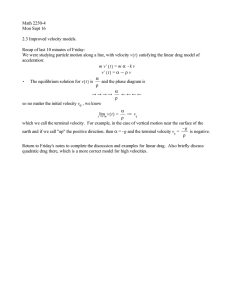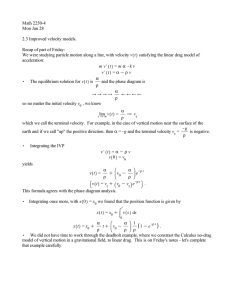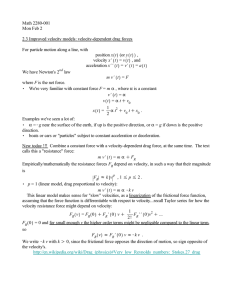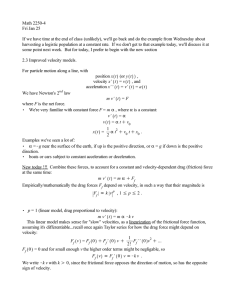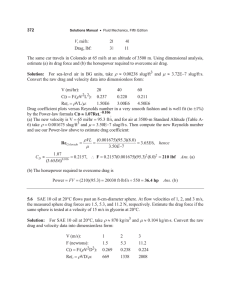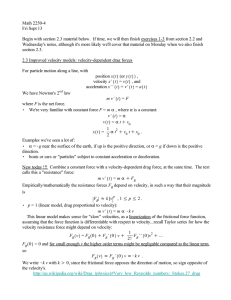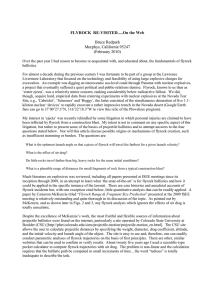Math 2250-4 Mon Jan 30
advertisement
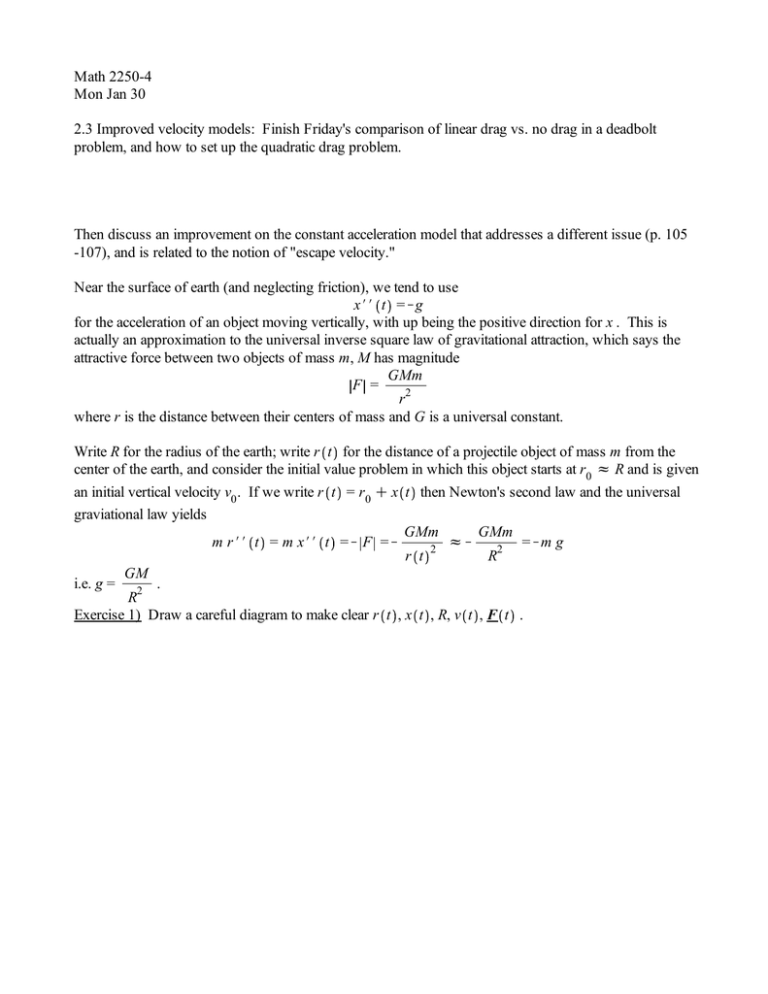
Math 2250-4 Mon Jan 30 2.3 Improved velocity models: Finish Friday's comparison of linear drag vs. no drag in a deadbolt problem, and how to set up the quadratic drag problem. Then discuss an improvement on the constant acceleration model that addresses a different issue (p. 105 -107), and is related to the notion of "escape velocity." Near the surface of earth (and neglecting friction), we tend to use x## t =Kg for the acceleration of an object moving vertically, with up being the positive direction for x . This is actually an approximation to the universal inverse square law of gravitational attraction, which says the attractive force between two objects of mass m, M has magnitude GMm F = r2 where r is the distance between their centers of mass and G is a universal constant. Write R for the radius of the earth; write r t for the distance of a projectile object of mass m from the center of the earth, and consider the initial value problem in which this object starts at r0 z R and is given an initial vertical velocity v0 . If we write r t = r0 C x t then Newton's second law and the universal graviational law yields GMm GMm m r ## t = m x## t =KF =K zK 2 =Km g 2 r t R GM i.e. g = 2 . R Exercise 1) Draw a careful diagram to make clear r t , x t , R, v t , F t . So our familiar constant gravity acceleration model is a "constantization" model of the truth. If x t approaches a significant fraction of R so that r t z R no longer holds, then it would be more accurate to use the universal law of attraction. Thus, for a projectile shot from the surface of the earth we'd have the second order DE initial value problem GM r ## t =K 2 r r 0 =R r # 0 = v0 . As r t increases, v t will decrease because of the negative acceleration, so the velocity v will be a decreasing function r , i.e. we can consider v=v r t . By the chain rule, dv dv dr dv r ## t = = $ = $v dt dr dt dr So we can convert the tKdifferential equation and IVP into the 1st -order separable r-differential equation dv GM v =K 2 dr r v R = v0 Exercise 2 2a) Use separation of variables to find the implicit solution to the IVP for v = v r . Hint: The answer is an equation equivalent to 1 1 v2 = v20 C 2 GM K . r R 2b) The equation above is equivalent to a conservation of energy law involving kinetic and potential energy. If you've had this discussion in a physics mechanics class, or of conservative vector fields in Calc III, you should be able to derive the equation above in that way too. Give it a try! 2c) How large does v0 have to be so that the implicit equation for v can be solved explicitly for a differentiable function v r defined for all r R R ? (This value of v0 is called the escape velocity.) (Hint: vescape = 2 GM R 2d) If v0 ! vescape , how high above the surface of the earth does the object get? Start with the same equation 1 1 v2 = v20 C 2 GM K . r R 2e) Could you put drag into this model?
